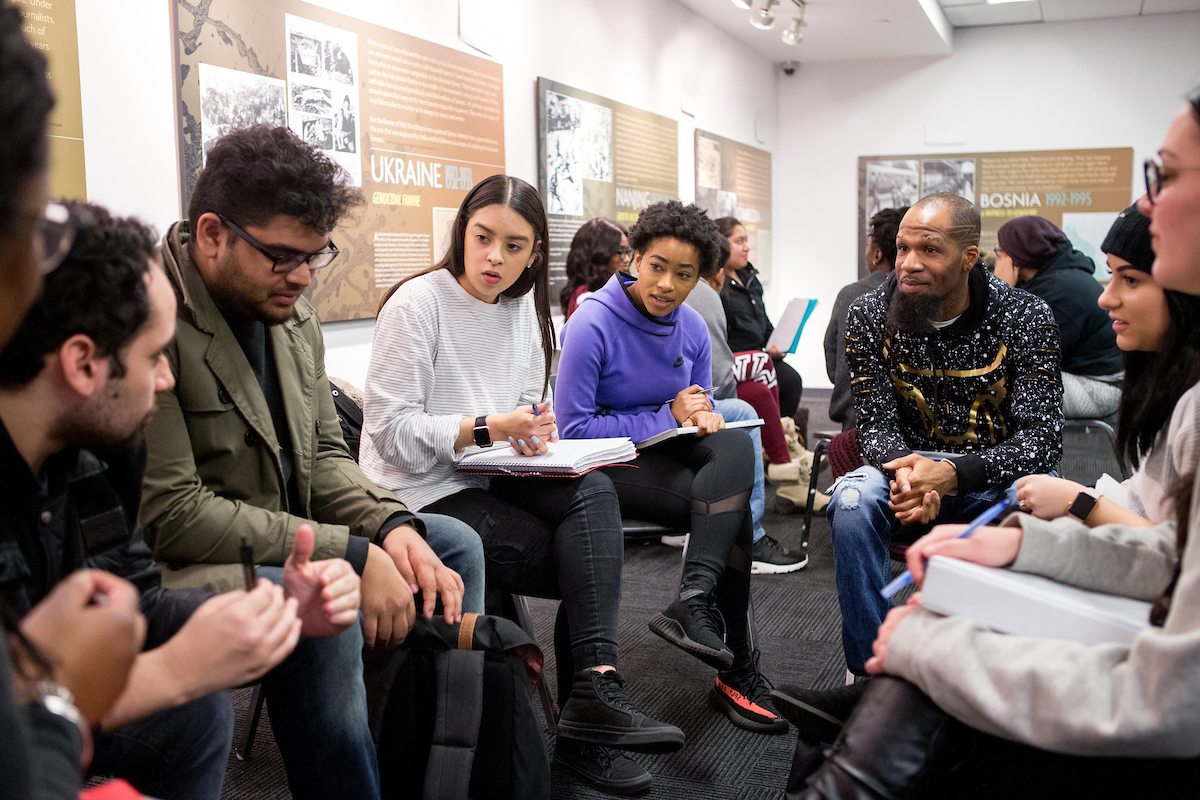
Collaboration & Complicity
The 2017-18 colloquium and accompanying library guide used a social psychological lens to evaluate the way that dominant institutions and situational factors impacted the behaviors (or passivity) of individual bystanders and larger communities. Click here to watch the events.
The scholarship on the Holocaust has increasingly transitioned from focusing exclusively on the perpetrators of violence against the Jewish population towards the enablers of Nazi policy and genocidal aims, which include complicity and collaboration on a massive scale. 2017-18 KHC-NEH colloquium, Collaboration and Complicity, is imperative in understanding the complexities of the Holocaust as it raises accountability not only to individual bystanders who remained passive or complicit as the Reich started to implement genocidal policies but to larger institutions such as the governments of occupied territories in Europe, the larger international community, and institutions that were designed to protect vulnerable populations, such as the Red Cross. Moreover, the role that individuals played as either rescuers or collaborators spotlights the potential regular civilians can play in terms of either resisting forces of evil or enabling its expansion. At the heart of this theme, the question of what kind of agency individuals possess as their government tilts towards authoritarianism is paramount.
The colloquium was organized by the 2017-18 KHC-NEH Scholar-in-Residence, Dr. Azadeh Aalai, Associate Professor of Social Sciences at Queensborough Community College-CUNY.